Land Invertebrates
Media
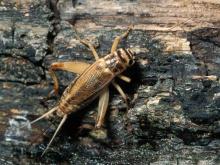
Species Types
Scientific Name
Acheta domesticus
Description
House crickets are probably native to Eurasia but are found nearly worldwide, having traveled the globe with people. Unlike most other field crickets in our area, they are tan and brown instead of glossy black.
Media

Species Types
Scientific Name
Milesia virginiensis
Description
The yellowjacket hover fly, or Virginia flower fly, is a completely harmless mimic of yellowjackets. No more dangerous than a housefly, it buzzes around and seems aggressive.
Media
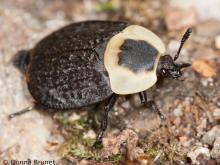
Species Types
Scientific Name
Necrophila americana
Description
The American carrion beetle has a yellow pronotum with a big black spot in the middle. Adults of this species of silphid beetle eat fly maggots, plus some carrion. In flight, they seem like bumblebees.
Media

Species Types
Scientific Name
About 28 species in North America
Description
Horntails look a lot like wasps but have a taillike spine that projects from the tip of the abdomen. Their cylindrical bodies also lack the narrow waist so common in wasps.
Media

Species Types
Scientific Name
Metcalfa pruinosa
Description
The citrus flatid planthopper has a waxy coating and can look gray or tan. It eats a wide variety of plants.
Media
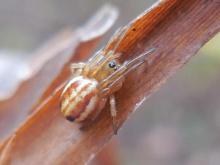
Species Types
Scientific Name
Araneus pratensis
Description
The openfield orbweaver is a common nocturnal orb-weaving spider in Missouri.
Media

Species Types
Scientific Name
Araneus marmoreus
Description
The marbled orbweaver is sometimes called the “pumpkin spider” because its rounded abdomen is sometimes bright orange. The color and markings can vary greatly.
Media
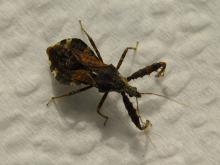
Species Types
Scientific Name
Sinea spinipes
Description
The spiny assassin bug is one of nearly 200 species of assassin bugs in North America. It walks, hops, and flies to capture its insect prey.
Media

Species Types
Scientific Name
Zelus luridus
Description
The pale green assassin bug, Zelus luridus, is one of nearly 200 species of assassin bugs in North America. Like other assassin bugs, it is a predator that captures and eats other insects.
Media
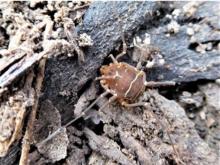
Species Types
Scientific Name
Members of suborder Laniatores
Description
Armored harvestmen have spines on their fingerlike mouthparts (pedipalps). Unlike other harvestmen, members of this suborder of so-called daddy longlegs do not usually have long legs.
See Also



Media

Species Types
Scientific Name
Cisseps fulvicollis
Description
The yellow-collared scape moth is more often “orange-collared.” And whether you think it looks more like a firefly or a wasp, it’s still a moth!
Media

Species Types
Scientific Name
Nearly 150 species in North America north of Mexico
Description
Slim, delicate plume moths are instantly recognizable by their T-shaped silhouette, long legs, and muted shades of tan and brown. It can be hard to separate the various species.
Media

Species Types
Scientific Name
Pyrrharctia isabella
Description
Not many people know the adult Isabella tiger moth when they see one, but we’re all acquainted with its caterpillar, the woolly worm, or woolly bear.
About Land Invertebrates in Missouri
Invertebrates are animals without backbones, including earthworms, slugs, snails, and arthropods. Arthropods—invertebrates with “jointed legs” — are a group of invertebrates that includes crayfish, shrimp, millipedes, centipedes, mites, spiders, and insects. There may be as many as 10 million species of insects alive on earth today, and they probably constitute more than 90 percent all animal species.





















